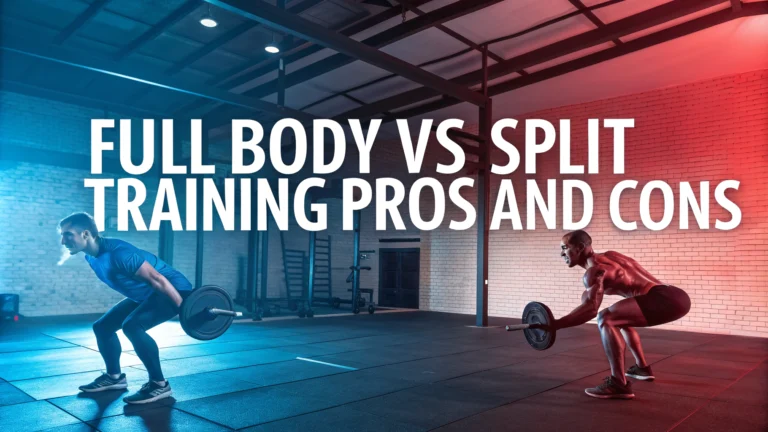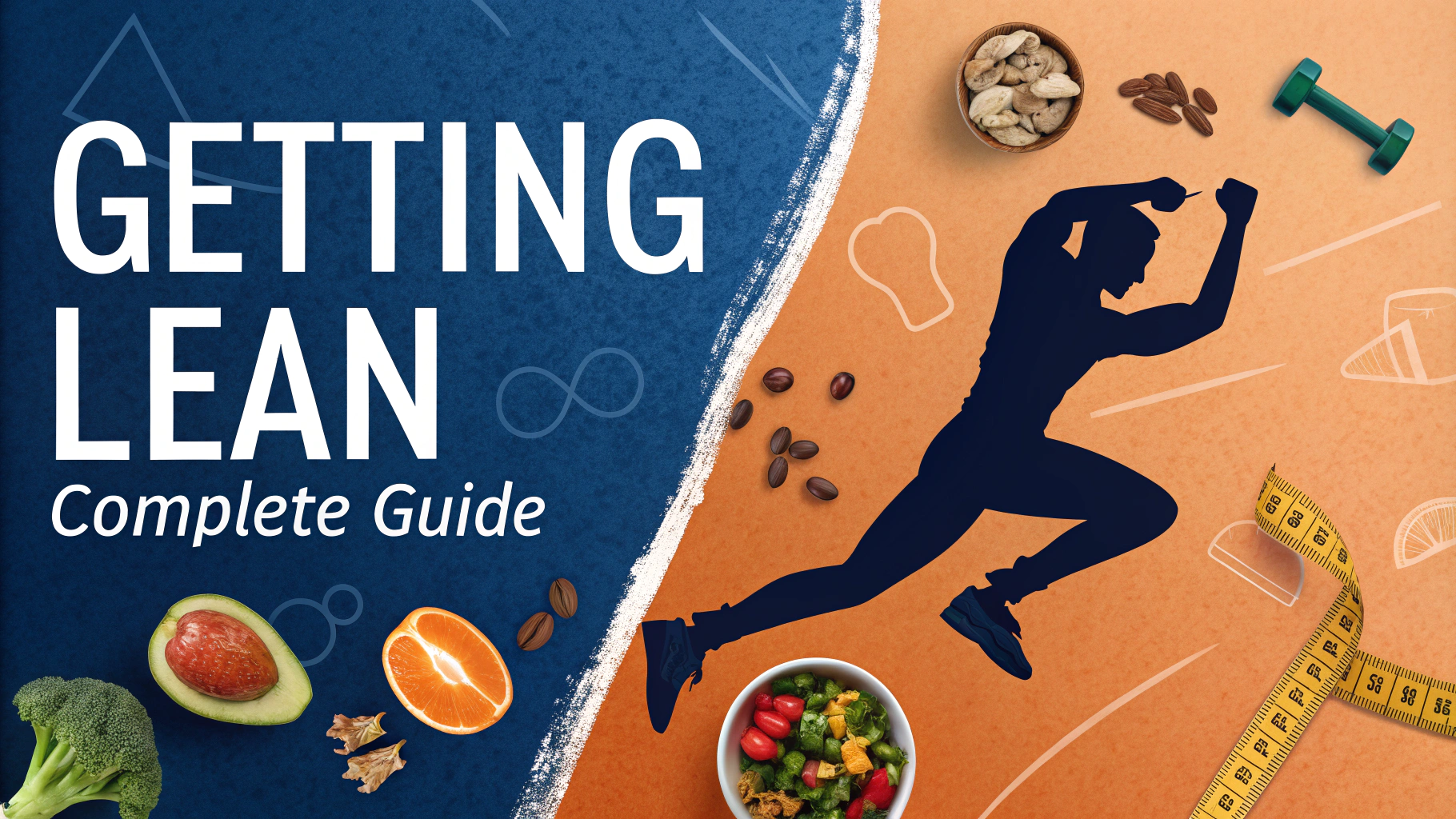Choosing between full body workouts and split training routines can significantly impact your fitness results.
Full Body Training
Full body workouts target all major muscle groups in a single session.
Benefits:
- More frequent muscle stimulation (2-3 times per week)
- Better for beginners learning proper form
- Time-efficient (3-4 workouts weekly)
- Higher calorie burn per session
- Better for fat loss goals
Drawbacks:
- Longer recovery needed between sessions
- Less exercise variety per muscle group
- May not be optimal for advanced bodybuilders
Split Training
Split routines divide workouts by muscle groups or movement patterns across different days.
Benefits:
- More exercises per muscle group
- Better for muscle isolation
- Shorter individual workouts
- Less fatigue during sessions
- Ideal for intermediate/advanced lifters
Drawbacks:
- Requires more frequent gym visits
- Less effective for fat loss
- May neglect movement patterns
Making Your Choice
| Choose Full Body If: | Choose Split Training If: |
|---|---|
| You’re new to lifting | You have 1+ year experience |
| Limited time (2-3 days/week) | Can train 4-6 days/week |
| Focus on fat loss | Focus on muscle growth |
Sample Full Body Workout
- Squats: 3 sets x 8-12 reps
- Bench Press: 3 sets x 8-12 reps
- Rows: 3 sets x 8-12 reps
- Shoulder Press: 3 sets x 8-12 reps
- Core Work: 2-3 exercises
Sample Split Routine
- Monday: Chest/Triceps
- Tuesday: Back/Biceps
- Wednesday: Rest
- Thursday: Legs
- Friday: Shoulders/Arms
Contact a certified personal trainer (NSCA Directory) for personalized advice on which training style suits your goals.
Training Frequency Considerations
Training frequency plays a crucial role in workout program success and recovery management.
Full Body Frequency:
- 48-72 hours rest between sessions
- 2-3 sessions per week optimal
- Higher overall recovery demands
- Better hormone response
Split Training Frequency:
- 5-7 days between same muscle groups
- 4-6 sessions per week typical
- Easier daily recovery
- More volume per muscle group
Progression Methods
Both training styles offer different approaches to progressive overload.
Full Body Progression:
- Focus on compound movement mastery
- Gradual weight increases
- Form refinement priority
- Total body strength development
Split Training Progression:
- Exercise variation opportunities
- Intensity techniques (drop sets, supersets)
- Volume manipulation
- Specialized muscle focus
Conclusion
Success in either training style depends on consistency, proper nutrition, and adequate recovery. Beginners typically benefit more from full-body workouts, while experienced lifters may prefer split routines. Consider your schedule, goals, and training experience when choosing between the two approaches. Regular assessment and adjustment of your program ensures continued progress.
FAQs
- What are the main differences between full body and split training routines?
Full body workouts train all major muscle groups in one session, while split routines divide muscle groups across different days. Full body is typically done 2-3 times per week, while splits can be done 4-6 times per week targeting specific muscle groups. - Which training style is better for beginners?
Full body workouts are generally recommended for beginners as they provide more frequent practice with exercises, allow better recovery, and help establish proper form and movement patterns across all major exercises. - How many rest days do I need for each training style?
Full body training typically requires 1-2 days of rest between sessions. Split training usually needs less rest between workouts since different muscle groups are trained, but each muscle group gets 5-7 days recovery before being trained again. - Which training style is more time-efficient?
Full body workouts are more time-efficient for people training 2-3 times per week, as each session hits all muscle groups. Split routines require more frequent gym visits to achieve similar weekly volume for each muscle group. - Can I build muscle effectively with both training styles?
Yes, both methods can build muscle effectively when properly programmed. The key factor is maintaining adequate volume, intensity, and recovery regardless of training style chosen. - Which style is better for fat loss?
Full body workouts typically burn more calories per session due to engaging more muscle groups and can be more effective for fat loss. However, both styles can support fat loss when combined with proper nutrition. - How do hormone responses differ between these training styles?
Full body workouts typically trigger a larger acute hormonal response (testosterone, growth hormone) due to more total muscle mass being stimulated in each session. Split routines may produce smaller but more frequent hormonal responses. - Which style is better for strength gains?
Both can be effective for strength gains. Full body allows more frequent practice of main lifts, while splits allow more volume and intensity per muscle group. The choice depends on individual goals and recovery capacity. - Are splits better for advanced lifters?
Advanced lifters often benefit from splits as they need more volume and intensity per muscle group to progress, which can be difficult to achieve in full body workouts without excessive session length. - How should I choose between full body and split training?
Consider your schedule availability, training experience, recovery capacity, and goals. Full body suits those with limited time, beginners, or those prioritizing functional fitness. Splits work well for those with more training experience and time to train frequently.








